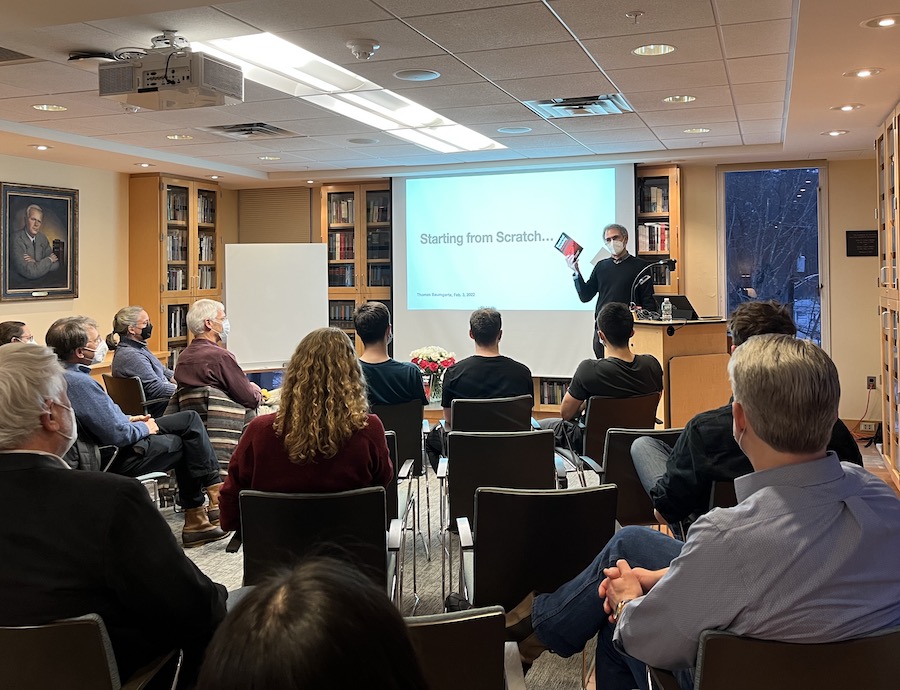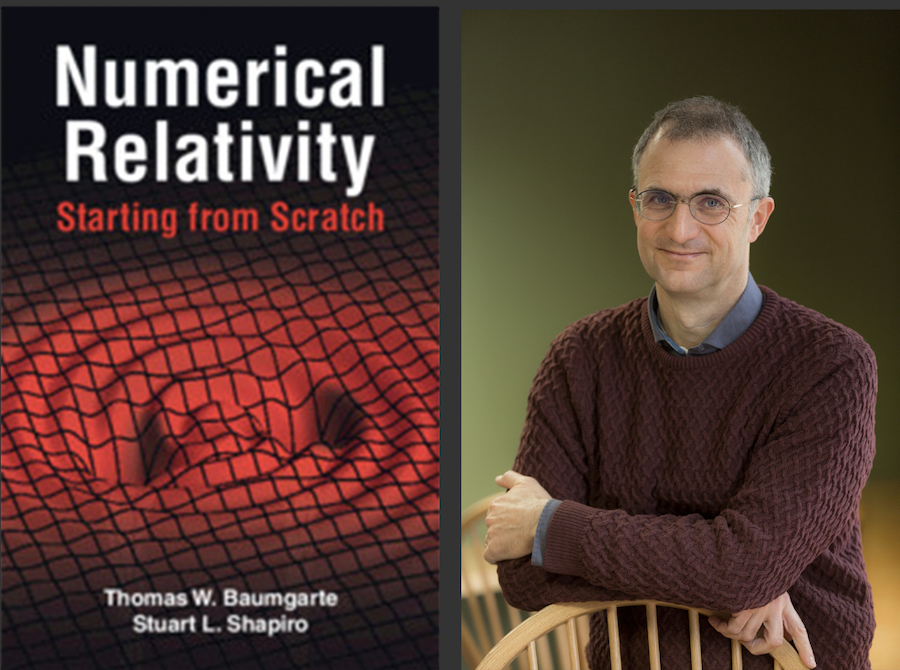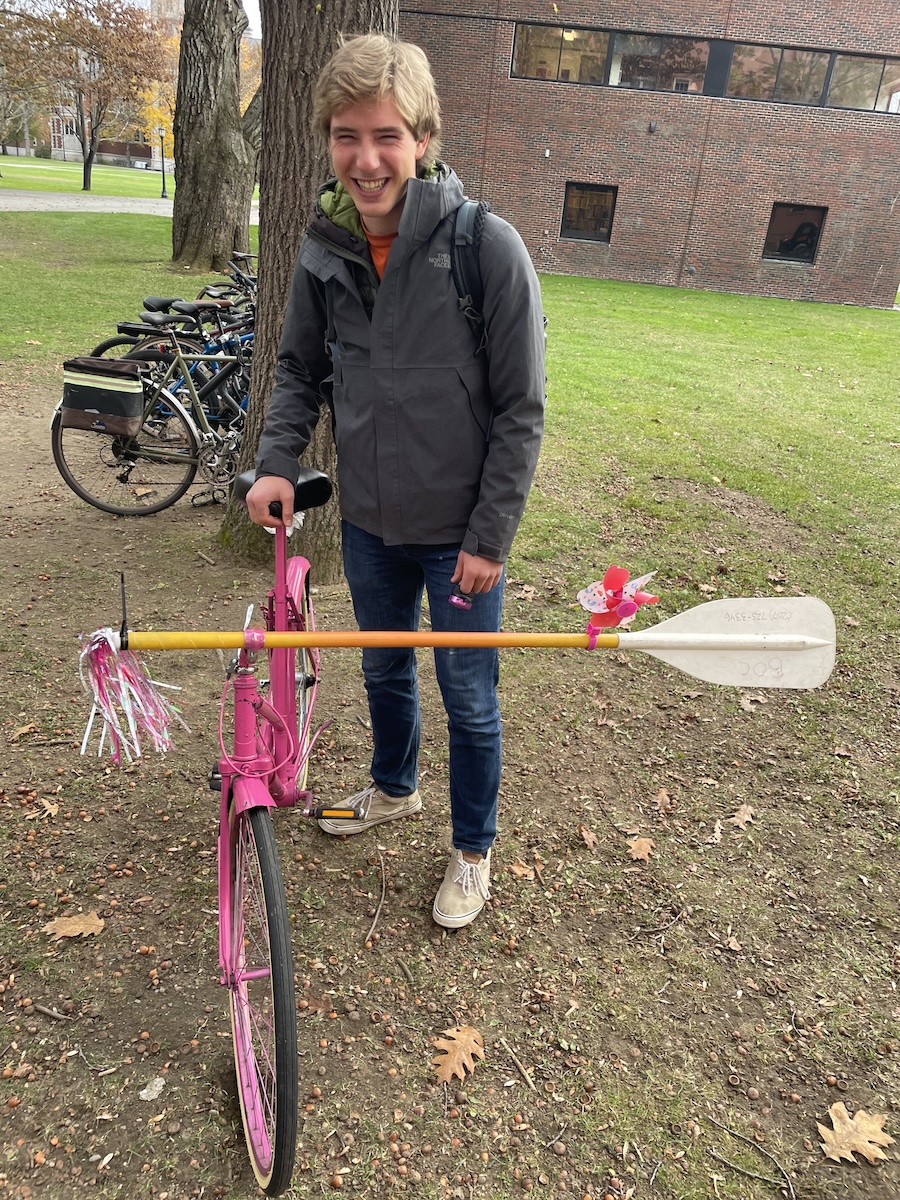Physicist Thomas Baumgarte Opens the Door to Numerical Relativity
By Kyubin Kim ’22
On the eve of the recent major snowstorm, students, faculty, and staff gathered in the Nixon Lounge of Hawthorne-Longfellow Library to listen to Thomas W. Baumgarte, William R. Kenan Professor of Physics, discuss his latest book, Numerical Relativity: Starting from Scratch, published last year by Cambridge University Press.
The publisher describes Numerical Relativity as "a pedagogical, accessible, and concise introduction to the subject."
Numerical relativity is a mathematical and computational subfield of general relativity, or Einstein's theory of gravity. It is key to simulating the gravitational waves emitted when black holes or neutron stars collide, which is Baumgarte's specialty.
Baumgarte began his talk by telling the story of how he entered this field. In 1990, he arrived at Cornell University as a visiting exchange student from Germany. He remembered his advisor telling him, “You should take classes with masters of the field!”
So he signed up for a class on general relativity with astrophysicist Stuart Shapiro. Baumgarte recalled asking Shapiro, when he started to work with him a graduate student, if there was a textbook he could read on numerical relativity. He was told no, the field was too young.

Later in his career, Baumgarte ended up addressing this gap. In 2010, he and Shapiro copublished a book that he would have been happy to read when he was just starting out. Numerical Relativity: Solving Einstein’s Equations on the Computer features a technical exposition aimed at readers with prior knowledge of general relativity.
Since the book was published, a series of exciting new discoveries shaped how Baumgarte and Shapiro approached their next book project. In 2015, gravitational waves were first detected, which Baumgarte affectionately calls a “present from nature.” Also, new software emerged and computing became more powerful, helping to spur growing interest in the field of numerical relativity.
Baumgarte's years of teaching convinced him that students would benefit from a treatise on numerical relativity that explains the science with analogies. The pair's new book starts with a “gentle” intro to Einstein’s theory of general relativity, and is aimed at making numerical relativity accessible to students around the world.
Numerical Relativity: Starting from Scratch also includes many exercises that allow the reader to work through problems. Additionally, readers can download sample codes from the Cambridge server to run themselves, giving them the chance to computationally construct black holes.



